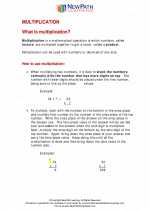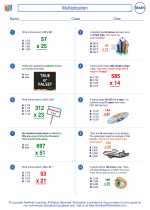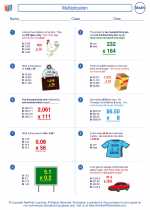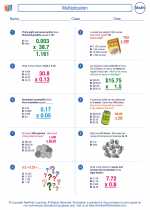Day - Study Guide
In the context of time and measurement, a day is a unit of time that is approximately 24 hours long. It is based on the time it takes for the Earth to complete one full rotation on its axis. Understanding the concept of a day is essential for various mathematical and scientific calculations.
Key Concepts:
- 24 Hours: A day is divided into 24 hours, with each hour consisting of 60 minutes, and each minute consisting of 60 seconds.
- AM/PM: The 24-hour day is often divided into two 12-hour periods - AM (ante meridiem) and PM (post meridiem).
- Time Zones: Different regions of the world have different time zones, which are based on the position of the sun. This affects the timing of a day's start and end.
- Solar Day: This is the duration of time between two successive transits of the sun across the observer's meridian. It is approximately 24 hours long and is the basis for the 24-hour day.
Formulas and Calculations:
When working with days and time, the following formulas and calculations are important:
- Converting Days to Hours: Number of Hours = Number of Days x 24
- Converting Days to Minutes: Number of Minutes = Number of Days x 24 x 60
- Converting Days to Seconds: Number of Seconds = Number of Days x 24 x 60 x 60
Practice Problems:
Here are some practice problems to test your understanding:
- If there are 5 days in a week, how many hours are there in a week?
- Convert 3 days into minutes.
- How many seconds are there in 2.5 days?
Answers:
- Number of Hours in a Week = 5 days/week x 24 hours/day = 120 hours/week
- 3 days = 3 days x 24 hours/day x 60 minutes/hour = 4,320 minutes
- 2.5 days = 2.5 days x 24 hours/day x 60 minutes/hour x 60 seconds/minute = 216,000 seconds
Understanding the concept of a day and being able to perform calculations related to days and time is crucial in various mathematical and scientific contexts. Practice problems and regular review can help solidify your understanding of this topic.
.◂Math Worksheets and Study Guides Sixth Grade. Multiplication
Study Guide Multiplication
Multiplication  Worksheet/Answer key
Worksheet/Answer key Multiplication
Multiplication  Worksheet/Answer key
Worksheet/Answer key Multiplication
Multiplication  Worksheet/Answer key
Worksheet/Answer key Multiplication
Multiplication 

 Worksheet/Answer key
Worksheet/Answer key
 Worksheet/Answer key
Worksheet/Answer key
 Worksheet/Answer key
Worksheet/Answer key

The resources above cover the following skills:
The Number System
Compute fluently with multi-digit numbers and find common factors and multiples.
Fluently multiply and divide multi-digit whole numbers using the standard algorithm. Express the remainder as a whole number, decimal, or simplified fraction; explain or justify your choice based on the context of the problem.